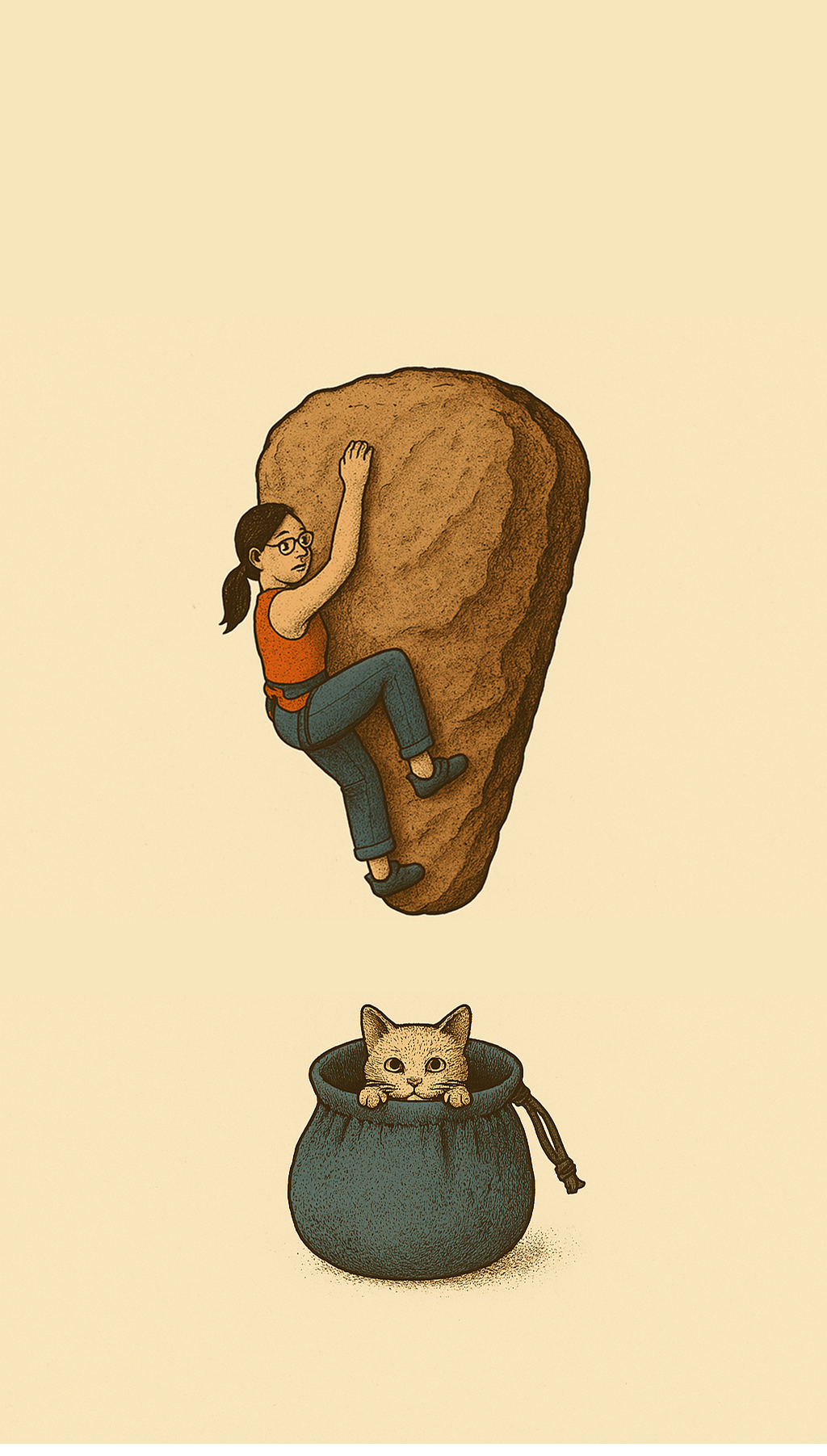Cleaning the Wall with Your Head: A Sensory Translation Drill for Lower Body Control
When climbers talk about “smooth movement,” they often mean graceful hands. But real mastery is footwork-led.
Balance-based climbing depends on your lower body moving with consistent, even control while your upper body remains quiet.
But on the wall, it’s hard to feel when your legs and hips move jerkily or unevenly—because you’re busy pulling.
This simple practice uses a towel, a wall, your forehead, and your senses to teach you to hear and feel the quality of your leg control.
Why This Matters
Climbing often exposes uneven leg control:
✅ Jerky weight shifts.
✅ Sloppy foot placements.
✅ Hips swinging unexpectedly.
These problems aren’t about strength—they’re about coordination and control.
The Drill: Cleaning the Wall
A slow, sensory-based way to train smooth movement.
Setup
✅ Stand facing a smooth wall.
✅ Drape a towel or t-shirt over your head.
✅ Rest your forehead lightly against the wall.
✅ Make sure you can breathe easily.
This head contact gives you transferred or translated feedback about your lower body movement.
Movement
Choose one:
✅ Squats
✅ Calf raises
✅ Side-to-side squats (advanced)
Perform slow, even reps.
Match tempo on the way down (eccentric) and up (concentric).
Use your full, comfortable range.
Sensory Feedback
Sound:
Listen to the towel sliding.
Smooth, even sound = consistent muscle control.
Scratchy or choppy sound = uneven control.
Example: If bumps or noise happen during lowering (eccentric), this may signal inconsistent control during descents—critical for precise landings or dynamic foot placements.
Touch:
Feel the forehead contact.
It should stay even and gentle.
Bumps or shifts = upper body compensating for poor lower body control.
Variations
Slower tempos.
Side-to-side squats.
Single-leg versions (if safe).
What You’re Training
Even muscle recruitment.
Coordination of legs, hips, core.
Awareness of subtle balance shifts.
This directly translates to precise, confident, balance-led footwork on the wall.
Bring It to Climbing
Next session, notice how your hips and feet shift weight, how quietly and precisely you can place your feet, and whether you can move with the same slow, mindful control even on faster moves.
Final Thought
By turning a simple “wall cleaning” movement into a sensory drill, you build the subtle, quiet control that makes climbing look and feel effortless.
Your legs don’t just support you—they lead you.
Teach them to move as intelligently as your hands aspire to.
